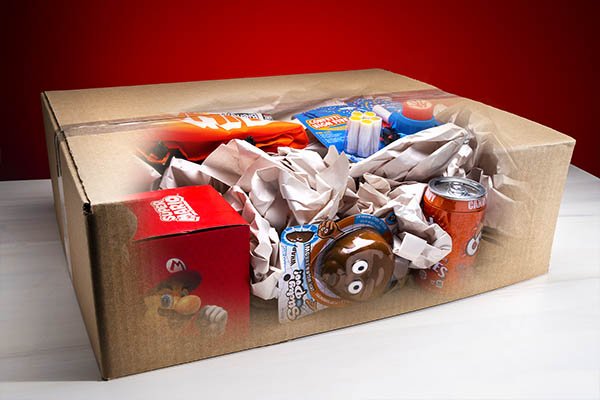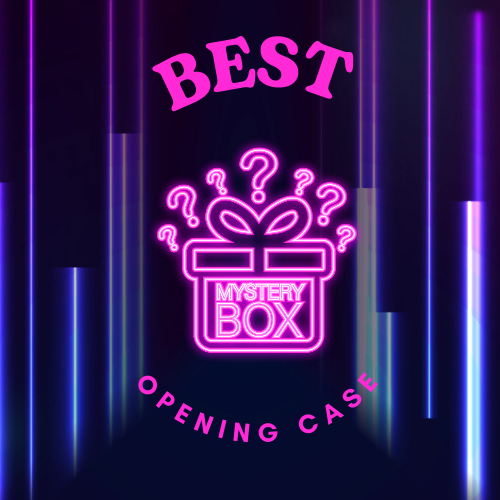
Mystery boxes have become a booming industry, attracting consumers with the thrill of the unknown and the chance to receive valuable items. However, one of the most powerful psychological factors driving sales is nostalgia. People love revisiting the past, and mystery boxes that include retro, vintage, or collectible items tap into this deep emotional connection. Whether it’s classic toys, vintage video games, or memorabilia from past decades, nostalgia-driven mystery boxes create a sense of comfort, excitement, and sentimental value that modern items often can’t replicate.
But why does nostalgia work so well in marketing mystery boxes? What psychological mechanisms make people more likely to purchase these products? And how do mystery box platforms curate nostalgic items to maximize sales and customer engagement? In this article, we’ll explore the fascinating intersection of nostalgia, psychology, and the mystery box industry.
The Science of Nostalgia: Why We Love the Past
Before diving into its impact on mystery boxes, it’s important to understand why nostalgia is such a powerful emotional trigger.
The Psychological Comfort of Nostalgia
Nostalgia is defined as a sentimental longing or wistful affection for the past. Studies show that when people feel nostalgic, they experience positive emotions, reduced stress, and increased feelings of social connectedness. This is why people often turn to nostalgia during uncertain times—whether personal struggles or global crises—because it provides a sense of stability and happiness.
How Nostalgia Influences Buying Behavior
Marketers have long understood that nostalgia can increase a consumer’s willingness to spend money. When people feel emotionally attached to a past era, they are more likely to value products that remind them of it. This is especially true for collectibles, as nostalgic consumers often perceive vintage or retro items as more valuable than their modern equivalents.
The Role of Dopamine in Nostalgic Purchases
When someone unboxes a mystery item that reminds them of their childhood or a cherished time in their life, their brain releases dopamine—the « feel-good » neurotransmitter. This reinforces the behavior, making them more likely to purchase another mystery box in search of a similar emotional high.
The Social Aspect of Nostalgia
Nostalgia isn’t just personal—it’s also social. Many consumers enjoy sharing their nostalgic experiences with others, whether through unboxing videos, social media posts, or conversations with friends. This creates a cycle of excitement and engagement, further driving mystery box sales.
Why Nostalgic Mystery Boxes Are So Popular
The appeal of nostalgic mystery boxes lies in their ability to evoke strong emotions and connect consumers to their past. Here are some of the key reasons they sell so well:
They Provide a Unique and Sentimental Experience
Unlike standard retail products, nostalgic mystery boxes offer an emotional journey. Opening a mystery box filled with 90s toys, retro video games, or classic movie merchandise can instantly transport a person back to their childhood.
Collectibility Increases Perceived Value
Many nostalgic items—such as vintage Pokémon cards, rare action figures, or first-edition comics—are not just fun to own, but also highly collectible. Because these items become rarer over time, they often gain value, making mystery boxes even more appealing to both casual fans and dedicated collectors.
Mystery Boxes Recreate the Joy of Childhood Surprises
For many consumers, opening a nostalgic mystery box feels like opening a childhood birthday gift or a surprise pack of trading cards. This sense of wonder and excitement makes the purchase more rewarding than buying a specific item outright.
They Offer a Form of Escape
Modern life can be stressful, and many people use nostalgia as a way to escape reality. Owning a piece of the past—even in the form of a small collectible—can provide a temporary emotional retreat.
The Rarity Factor Drives FOMO (Fear of Missing Out)
Nostalgic items often come in limited editions or exclusive drops, making them highly desirable. Mystery box platforms take advantage of this by offering « vaulted » (discontinued) items, rare collectibles, or one-time-only releases, encouraging consumers to buy before it’s too late.
The Most Popular Types of Nostalgic Mystery Boxes
There are several types of mystery boxes that capitalize on nostalgia, each targeting different audiences.
Retro Gaming Mystery Boxes
These boxes contain classic video games, consoles, or accessories from past generations (NES, SNES, PlayStation 1, Game Boy, etc.). Many gamers enjoy reliving the experience of playing their childhood favorites, while collectors seek sealed or rare editions for investment purposes.
Vintage Toy Mystery Boxes
Popular among collectors, these boxes may include 90s action figures, Hot Wheels, Tamagotchis, or LEGO sets. Many adults buy these to recapture their childhood experiences or introduce them to their own kids.
Pop Culture & Movie-Themed Mystery Boxes
These often feature memorabilia from classic TV shows, movies, or franchises like Star Wars, Marvel, Disney, Harry Potter, and The Simpsons.
Trading Card Mystery Boxes
Many mystery boxes contain vintage Pokémon, Yu-Gi-Oh!, Magic: The Gathering, or sports trading cards. Rare or first-edition cards can be incredibly valuable, adding to the excitement.
80s and 90s Merchandise Mystery Boxes
Some mystery boxes are curated to capture a specific decade, filled with nostalgic items such as cassette tapes, VHS movies, band T-shirts, and even discontinued snacks or drinks.
How Mystery Box Platforms Leverage Nostalgia to Increase Sales
To maximize the appeal of nostalgic mystery boxes, platforms use strategic marketing techniques to enhance emotional engagement and encourage purchases.
Limited Edition and Exclusive Releases
By creating exclusive nostalgia-themed mystery boxes (e.g., « 90s Cartoon Classics » or « Retro Arcade Box »), platforms generate excitement and urgency.
Influencer and Celebrity Collaborations
Many mystery box brands collaborate with influencers or celebrities who are known for their love of retro culture. Seeing a popular YouTuber open a nostalgic mystery box can drive massive sales spikes.
High-Quality Packaging and Themed Boxes
The unboxing experience is crucial. Platforms design boxes with retro aesthetics, vintage-inspired packaging, or throwback branding to enhance emotional impact.
Surprise and Gamification
Some mystery boxes include « golden ticket » prizes, where a few lucky buyers receive ultra-rare items. This gamification strategy increases repeat purchases.
Subscription-Based Nostalgic Boxes
Many platforms offer monthly subscription boxes featuring new nostalgic items each month. This keeps consumers engaged long-term.
Challenges of Nostalgic Mystery Boxes
Despite their popularity, nostalgia-driven mystery boxes come with unique challenges:
- Rarity and Supply Issues: Authentic vintage items are harder to source, making consistent inventory a challenge.
- High Production Costs: Re-releasing old products or securing official licensing can be expensive.
- Scalpers and Resellers: Limited-edition nostalgia boxes often get resold at inflated prices, making them inaccessible to genuine fans.
- Counterfeit Items: Some platforms mix fake collectibles with real ones, leading to customer trust issues.
The role of nostalgia in mystery box sales cannot be overstated. By tapping into emotion, nostalgia-driven collectibility, and the thrill of surprise, these boxes create an irresistible experience for consumers. Whether it’s vintage gaming, pop culture memorabilia, or childhood toys, the demand for nostalgic mystery boxes continues to grow.
For mystery box platforms, understanding and leveraging nostalgia effectively can boost engagement, customer loyalty, and long-term sales. And for consumers, the joy of rediscovering the past—one unboxing at a time—makes every mystery box purchase a thrilling and sentimental adventure.
